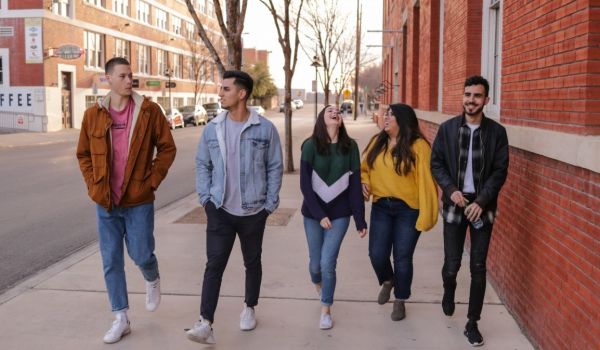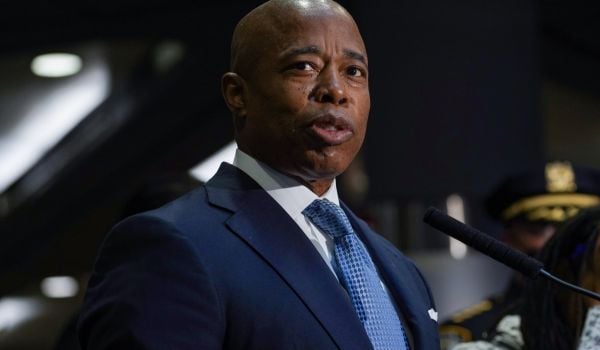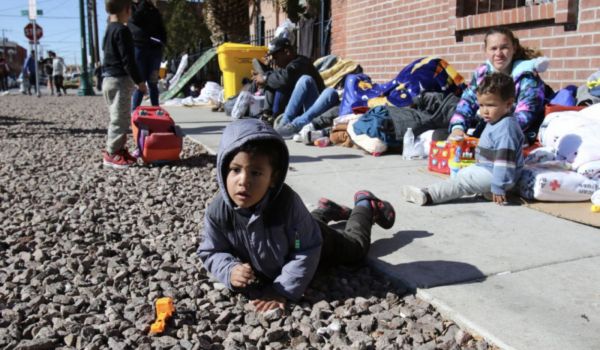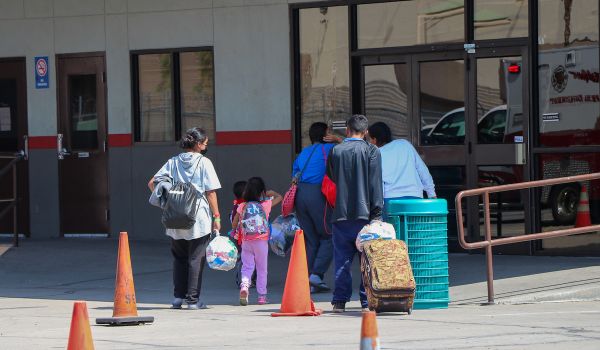Ellis Island was once the border of New York City, a gated drawbridge for millions of immigrants to what would become their new homeland. But today, when New York’s border is at the Rio Grande, that checkpoint is beyond its control. From the perspective of necessity, prudence and even justice, cities must expand their policies of welcome to match their extended borders.
Months have passed since Mayor Eric Adams declared that there was “no more room at the inn” for asylum seekers arriving in the city. Invoking, perhaps inadvertently, a Biblical metaphor, the mayor suggested that New York City’s shelter system was at capacity. The city is now struggling to shelter the over 100,000 migrants who have arrived in New York in the past year — mostly via buses from states led by Republican governors, who in a controversial political ploy have encouraged the migrants to travel to self-proclaimed sanctuary cities.
Per the latest numbers from the Coalition for the Homeless, more than 84,000 people slept in the main shelter system in New York City in June 2023. Arguing that the city lacked the resources and capacity to maintain adequate shelter for the migrants, Mayor Adams requested that New York’s right to shelter be suspended. The request ignited strong opposition from the Coalition for the Homeless and the Legal Aid Society, which had filed a historic lawsuit in 1981 which resulted in the right-to-shelter rules.
In addition to the limited capacity of 140 hotels already filled by migrants, the city said it had explored “other options” for housing migrants, each of which faced local challenges: tents on Orchard Beach in The Bronx (proved prone to flooding and abandoned), gym spaces in public schools (resulted in protests from public school parents and abandoned), suburban communities (in Rockland Country, the municipality blocked the relocation of migrants), tents in Randall’s Island (opposed by petitions with over 3,000 signatures), and a cruise ship terminal in Brooklyn (objected to by immigrants themselves for inadequate living conditions). The city had also considered setting up tents in Central Park and, in August 2023, hundreds of migrants slept on the streets near Roosevelt Hotel in Midtown Manhattan before the city relocated them to shelters.
The migrant condition in New York has exposed not just the failure of federal immigration policies and the difficulties of undertaking immigration reform, or the failures of federal urban policies in investing in housing and needed resources in cities, as Mayor Adams appears to be suggesting. It has also exposed the failures of city policies.
It’s true that more can be done on the state and federal level. New York State Governor Kathy Hochul can provide more assistance to Mayor Eric Adams. The real transformational opportunity is at the national level, where a federal resettlement agency should be created for the direction of aid toward cities to provide social housing, health and social services, and educational and employment opportunities.
The agency could direct local government offices, and coordinate with legal aid and community-based nonprofit organizations, to supplement existing grassroots practices. It could aid immigrants, both the undocumented and asylum seekers, as well as the temporary and permanent residents. This would not be a program created in the place of other policies for poorer citizens, including public housing for example, but one in synergy with those urban redistributive strategies.
Of course city politics, as political scientist Paul Peterson showed in his 1981 book City Limits, is fundamentally limited, unlike national politics. A city’s migration politics is necessarily a constrained type of policy. But even within that constraint there are opportunities to improve strategies of engagement: redistributional policies, in particular those involving housing, education and social services, should share a commitment to equity and inclusion.
Cities are not utilizing the powers that they already possess to substantively address myriad urban inequalities — powers that have grown in recent decades as the federal government has increasingly exited from urban policy making.
Misconstruing this, Nicole Gelinas of the City Journal recently challenged readers to consider the death of Jordan Neely, the homeless street performer who died in an altercation on the New York subway: “Why wasn’t he”– a New Yorker in need, rather than a newly arrived asylum seeker — “in a private hotel room, with round-the-clock ‘welcoming’ care?”
Gelinas, who focused in her discussion on how asylum seekers were taking space from paying tourists in the New York hotels, was in a sense correct to link the urban conditions of homelessness and migration. Indeed, the city should have provided health care and supportive housing to Jordan Neely, who struggled with mental illness while homeless.
But how should the city have prioritized the seemingly competing needs of a migrant influx and homelessness crisis?
To answer this question, we need to first reconceptualize the role of urban policy in resolving urban problems, from racism to affordable housing. Cities have a responsibility to the broader urban community, and the objectives of participatory and democratic governance should shift in that direction away from emphases in recent decades on zoning, tax subsidies and tourist policies that serve private development interests.
We also need a new understanding of sanctuary from below, focused on robust community-based initiatives. In my study of the sanctuary movement, I found that the New Sanctuary Coalition — whose work to assist migrants and asylum seekers continues through several channels of secular and faith-based activism including the Good Shepherd Lutheran Church in Brooklyn — attempted to build an expanded sanctuary movement linking immigrant rights to the struggles of a broader group of individuals who have come in contact with the criminal justice system.
The New Sanctuary Coalition did not try to distinguish between “worthy” immigrants and “undeserving” immigrants, nor did it draw a boundary between the “host” and the “guest.” Instead, through its accompaniment program, it actively worked to disrupt claims of state monopoly on the legal and the political. The sanctuary movement exposed the political subjectivities of sanctuary participants, who challenged the state to recognize their “right to have rights.”
Cities should take note of these practices of empowerment. “Sanctuary space is a safe place where one could place oneself in the shoes of those who suffer—being able to see people in the same situation builds that confidence,” one participant told me. Sanctuary, another told me, “has made me stronger. I have become a community leader. It is also about meeting people who care about those who have no voice.”
Why leave immigrants voiceless in the shadows of the city? But they are not voiceless — we simply need to listen. State and federal policies, currently insufficient, can help us to do so. But cities can also enter these conversations themselves right now, engaging with those who have crossed that distant border and drawing them into the life of the city of which they are already part.
Vojislava Filipcevic Cordes is the author of a forthcoming book on the politics of sanctuary. A New York–based interdisciplinary urban studies scholar, she holds a PhD in urban planning, with second fields in sociology and political science, from Columbia University. She teaches at Columbia SIPA.
















